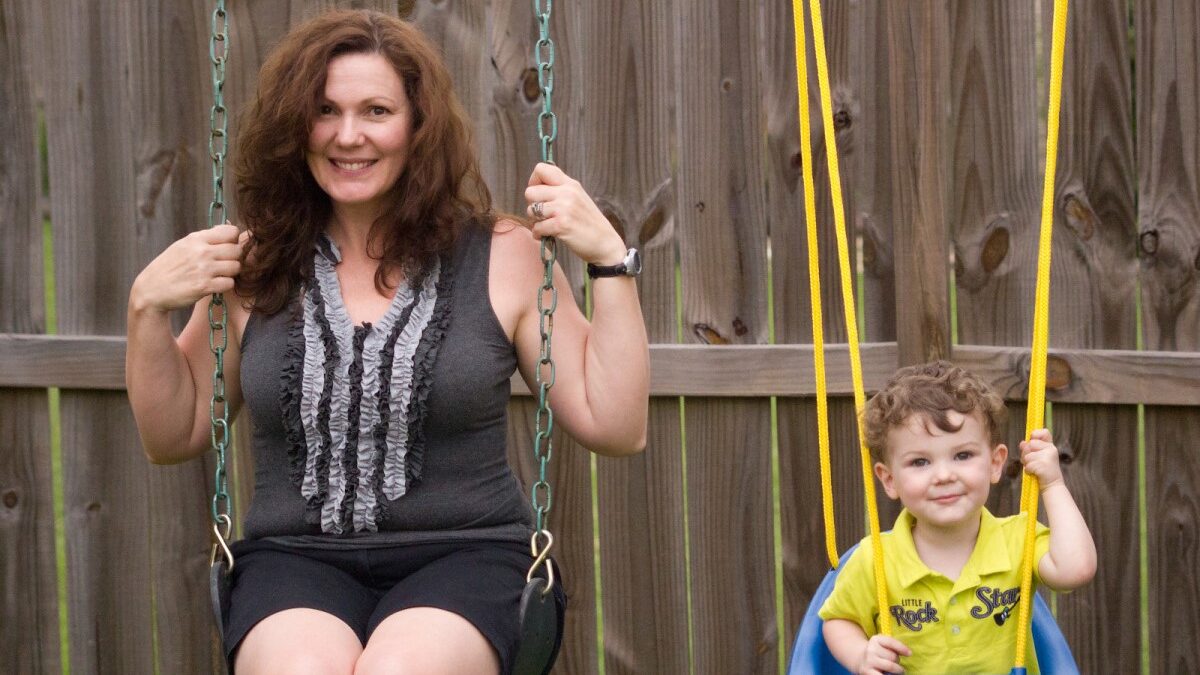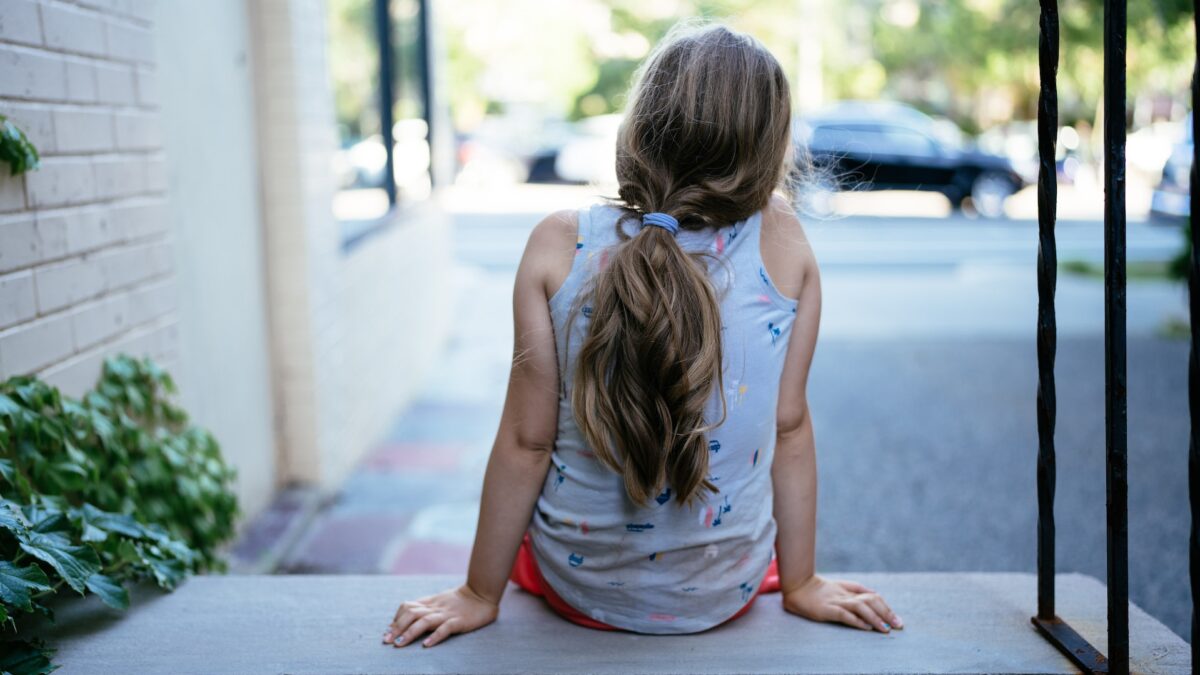Back when Hollywood still had original ideas and didn’t need to keep stealing from comics and novels, it created a little movie called “Paternity.” Burt Reynolds played a Peter Pan, 40-something guy who wanted to have a son opposite Beverly D’Angelo’s “having a baby is just a biological function” waitress aspiring to master music lessons in Paris. (It was 1981. The conventional wisdom thought men would be the ones to get baby hunger.) Reynolds’ character agrees to pay D’Angelo’s character $50,000 for natural insemination and gestation. Slow-paced silliness ensues.
With hindsight, I find it interesting Hollywood managed to spot the issues that would come with modern family arrangements. Hollywood just tied them up in a happy ending bow. Choosing a surrogate felt too job interview-y. So Reynolds’ character asks a spunky, young, and pretty waitress on a whim. Artificial conception felt too clinical. So Reynolds and D’Angelo’s characters opt for a fantasy role-play. The planned pregnancy felt too controlled, but silly diet restrictions and exercise requirements made the characters come closer together. And when the mother became attached to the not-so-much-just-a-biological-function child growing inside her and tried to flee, the father realized how much he wanted her, not just the child. They end up getting married while rushing into the hospital and, according to that vertical stretch-effect final shot popular in ‘80s cinematography, go on to have three daughters.
But reality often skips the Hollywood happy spins. Our Brave New World of family formation, whether technological or social, has more challenges, and less happiness. If “Paternity” were a reality show, D’Angelo and Reynolds wouldn’t stay together, she would take the baby to Paris, little sisters wouldn’t arrive, and Reynolds would be lucky to see his daughter a couple of times a year, if ever.
Dads in broken or assorted-never-married partnerships often want a full relationship with their children but are denied by cultural and legal assumptions that make it easy to cut dads out of the picture. Paternal alienation is common, intent to alienate not really required. As Father’s Day approaches, I thought to tell a few of their tales.
The Now-Wiser Dad
Warren Farrell is a (or perhaps the) expert on custody issues and a longtime advocate for Shared Parenting, the name he gave to joint-physical custody back in 2001 in his fifth book, Father and Child Reunion. Earlier this month, during a press conference for leading SP advocates, he told a story of a second-time father.
Farrell was one of the men brought into the National Organization for Women in its early days. He created some men’s groups within NOW. One day in New York, a man approached him and told him that the men’s group he had participated in changed his life. The father was from England. He had left his first son behind when he came to the States. Later he remarried and had a second son. Based upon what he learned at the men’s group Farrell had formed, the man asked his wife if she’d be ok with him taking time off of his career to spend time with their son. She was. So he did.
Farrell asked how it had gone. The man told him it was the best decision he had ever made in his life. The father regretted he hadn’t spent time with his first son because his second son grew up “with so much life in him, so much learning, and opportunity, and curiosity.” Farrell was thrilled, of course. But as a nose-in-a-book scholar, Farrell didn’t watch TV. He didn’t realize he had been talking to John Lennon.
The Sperm-Donor Dad
It is almost cliché to say many women treat men as sperm donors by dominating childrearing and family life and pushing fathers out of meaningful interaction with their children after the requisite baby-making. It isn’t always an analogy.
Readers may have heard Jason Patric’s story. Patric, of “Lost Boys” fame, had a long-term, on again-off again girlfriend, Danielle Schreiber. As common these days, she asked her long-time friend, sometimes boyfriend, to partner with her for some friendly baby-making, which did not work. They turned to fertility treatments. Patric signed not the standard donor disclaimers but the intended-parent form at the clinic before “donating” his sperm. She got pregnant. When the child was born, Patric and Danielle raised Gus together, even getting romantically involved again for a time. But when the boy was about 2 years old, the couple split for good.
Danielle refused visitation for Patric and Gus. Patric went to court to assert his right to see his son. Danielle counter-claimed that Patric was a mere sperm donor and not entitled to any parental rights. The California court agreed, based upon a law designed to protect sperm donors from child-support claims. Patric lost any right to see his son.
Here’s Patric’s July 2013 “I want to see my son” interview on “The Today Show”:
Visit NBCNews.com for breaking news, world news, and news about the economy
A few weeks ago, a California appellate court overturned the lower court’s ruling, finding:
[A] sperm donor who has established a familial relationship with the child, and has demonstrated a commitment to the child and the child’s welfare, can be found to be a presumed parent even though he could not establish paternity based upon his biological connection to the child.
Patric might yet be reunited with Gus. The appellate decision only gives him the right to seek custody or visitation. He still has the family court process to go though. It’s been more than a year since they have seen each other. Gus is 4. During the appeal process, Patric created a funding organization and advocacy group for fathers and children in similar positions, Stand Up for Gus. As Patric explained, not only did he want to help fathers in similar straits, but also, should he fail to gain visitation rights, “I want to leave a huge paper trail so Gus knows how hard I fought for him.”
The Falsely Accused Dad*
Roger’s wife was a controlling workaholic. He was the primary caregiver for their 3-year-old daughter. He worked from home, making more money than he had outside the home, but his wife didn’t approve. The marriage deteriorated. He filed for divorce and moved out of the family home into a nearby apartment.
Two weeks later, the mother called Child Protective Services and reported him for molesting their daughter. After a five minute interview with the toddler, CPS determined that molestation had occurred. It was another 45 days before he saw his daughter again, in a controlled and supervised setting.
He submitted to a polygraph. He submitted to two psychosexual evaluations. Each supported his defense that he had not molested his daughter. The CPS caseworkers refused to even interview Roger. It came out that the mother had done practice interviews with family members before the daughter’s five minute evaluation that damned Roger’s chances of a relationship with his daughter. The area district attorney wouldn’t prosecute the case for lack of evidence.
None of that mattered. Based upon the CPS recommendation, the court granted Roger four supervised hours per week to see his daughter. The first supervising agency realized within a year that the little girl was being manipulated by her mother and paternal abuse was not likely. As is her right, the mother fired that agency. The second agency realized the same thing. She fired them, as well.
Ten years on now, Roger has two hours a month, supervised, with his daughter. She has stopped talking to him about anything. She stopped hugging him when she was 10. The supervisors make reports to the mother, who likely pressures the daughter about any affection towards her dad. A while back the supervisors told him he could no longer take pictures with his daughter. A few weeks prior, he had brought some old pictures of the two of them to show her. But all attempts at real connection get cut off.
Roger hopes his daughter will one day understand how much he loves her and how much he wants to be a dad for her. He worries about her future relationships. How will she ever trust a man when her experience involves short visits accompanied by a second-guessing audience? But all he can do now is show up for his two hours a month and hope.
*Names and minor details changed to protect the daughter’s identity.
The Left-Behind Dad and Father-Child Research
Shane Peterson hasn’t seen his daughters, who are ages 7 and 4, since they moved with their mother to Sweden. When Peterson divorced his wife, he gave her primary custody of their daughters. He thought he was being reasonable, avoiding drawn-out custody negotiations that would further stress his daughters. In fact, he was making it easier for her to leave the country with the children.
The case law on removals, moving children away from non-custodial parents, heavily favors the custodial parent, which is usually the mom. According to Ned Holstein of the National Parents Organization, Massachusetts even basically equates the best interests of the child to the best interests of the custodial parent, and approves most removals as a matter of course. Dads like Peterson end up fighting to keep their children nearby against legal assumptions which were formed decades ago based upon Freudian theories.
Prior to the 1970s, divorce was relatively rare. Social scientists did not create large, long-range, and expensive studies to examine the effects on children of divorce simply because there weren’t many children of divorce. When determining custody arrangements back then, courts looking for expertise found mostly Freudian-influenced studies on orphans that led to mother and child attachment studies. From the linked 1992 “Origins of Attachment Theory” paper in Developmental Psychology:
Although we have made progress in examining mother-child attachment, much work needs to be done with respect to studying attachment in the microsystem of family relationships (Bronfenbrenner, 1979). Despite studies by Belsky, Gilstrap, and Rovine (1984), Lamb (1978), and Parke and Tinsley (1987) that show fathers to be competent, if sometimes less than fully participant attachment figures, we still have much to learn regarding father attachment.
The experts had a preference for primary mother time because they didn’t have data on anything else. Formal studies of children in broken homes didn’t start until the ‘80s, when the post-sexual revolution divorce rate spiked. Suddenly, there were children of divorce to study and a fierce need for real data. Hence the long-term studies and meta-studies (the studies of studies) increased from a trickle to a flow in the past decade.
According to Father and Child Reunion, the 2001 book by Dr. Warren Farrell analyzing the first crop of long-term studies, shared parenting (splitting custody more or less equally among the parents in the absence of physical abuse) is in the best interests of the child of a split household. Specifically, Farrell’s findings suggest the following ranking as best for children:
- The intact family;
- joint physical custody, shared parenting;
- primary father time;
- primary mother time.
The most recent meta-study, The Casual Effects of Father Absence, makes similar findings:
The body of knowledge about the causal effects of father absence on child well-being has grown during the early twenty-first century as researchers have increasingly adopted innovative methodological approaches to isolate causal effects…. We find strong evidence that father absence negatively affects children’s social-emotional development, particularly by increasing externalizing behavior. These effects may be more pronounced if father absence occurs during early childhood than during middle childhood, and they may be more pronounced for boys than for girls.
This is what frustrates fathers so much, beyond their own pain and longing for their children. They intuitively know that father presence matters a great deal to children, but the data is new. And as a society we might speak in terms of the best interest of the child, but…
The Can’t-Possibly-Be-Good-Enough Dad
I spoke with Ned Holstein, founder of the National Parents Organization, who mentioned something that should be obvious from most coverage of custody issues but isn’t: “As an advocacy organization, we rarely hear from the children themselves, either young or grown. This is because they retain loyalty to both parents and do not want to appear to be critical of their custodial parent.” One of these children reached out to me when she heard about the piece I was drafting. Nicole Fisher, an author here and at Forbes, told me her father’s story.
Her parents divorced when her father realized her mother had violent tendencies, back when Nicole, the eldest, was still a baby. He sought sole custody, for obvious reasons. For years, however, legal assumptions about daughters always needing their mothers caused her and her sisters to be uprooted from their father’s home to spend time with their mother. This devastated them. In a decade of legal wrangling, including her father recording and meticulously documenting incidents occurring at their mother’s home and Nicole taking the stand at the age of 10 and having to choose her father in court, still the fight did not end until grandparents took joint custody in lieu of her mother because the court could not fathom granting sole custody of daughters to their father.
Her dad tried everything. She remembers her father coming home from the firehouse (he was a fireman) helping with chores and homework, and then leaving to go to a class on how to fix hair. French braids and pigtails were a daily request. He wanted to provide that bit of typical mothering for them. Apparently, he never mastered trimming bangs straight. Nicole has school photos to prove it.
Despite all of the dramatic assumptions of men as abusive deadbeats, most are more like a fireman who will happily learn to braid hair if that’s what his children want. Jason Patric has been doing public appearances for months, scorching a trail that his son can one day see. He says he has not made one appearance talking about alienation of fathers where “someone hasn’t stopped me on the way out, a cameraman, someone in makeup, saying ‘this happened to my brother,’ ‘this happened to my father,’ ‘this happened to me’—not one. It’s everywhere.”









